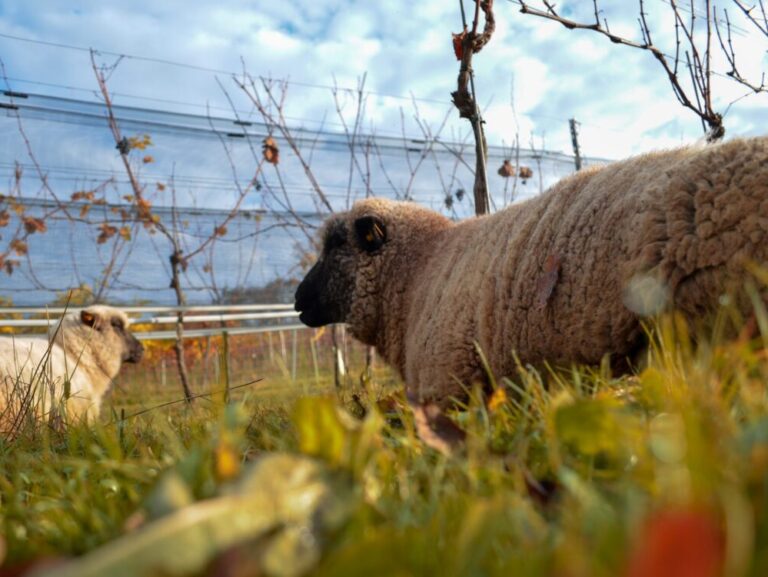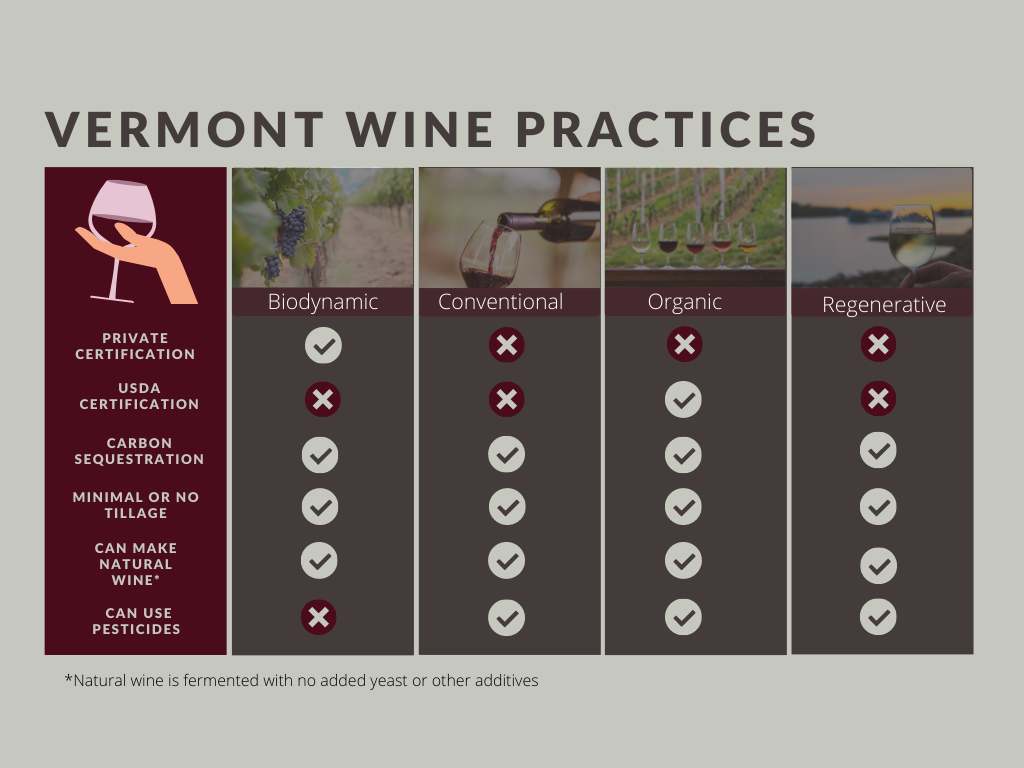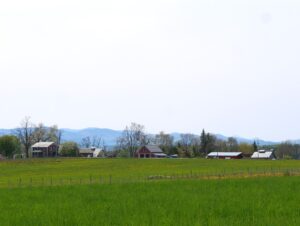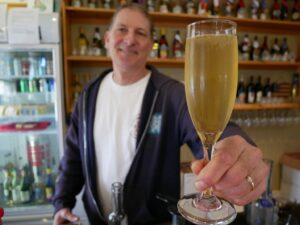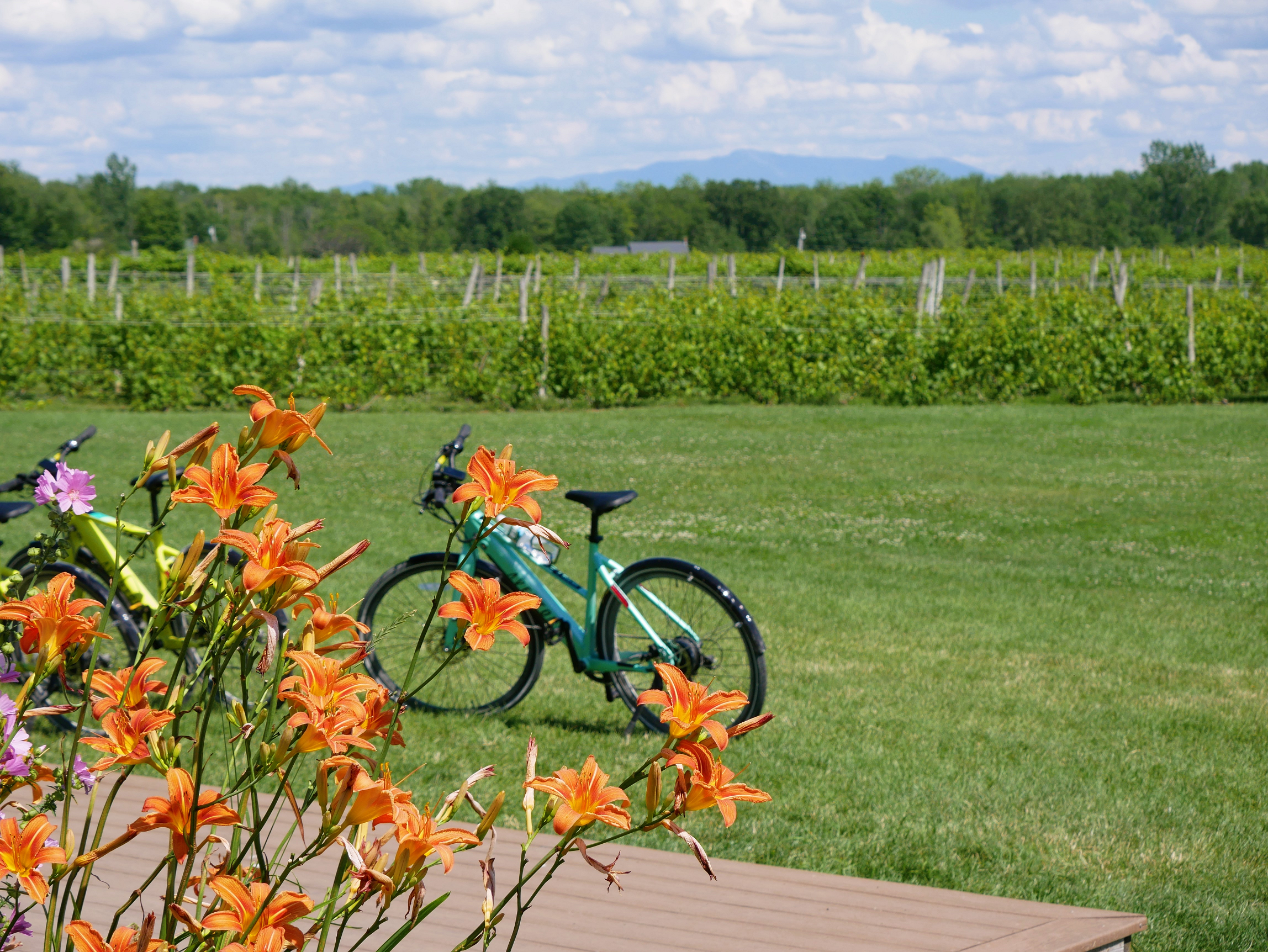If you’re a wine lover, then you know the words organic and natural can be used to describe wines. There are also sustainable, biodynamic, and regenerative practices. Wines with these labels are the latest hotness in the wine world and are renewing the waning interest of millennials in wine, much to the excitement of winemakers.
Even though people are snatching up these trendy wines as fast they can be bottled, the standards for producing them can be as cloudy to wine drinkers as their glass of Pét-nat, a natural wine made with little intervention.
Luckily for you, we’re here to help break it down with the help of Terence Bradshaw, Assistant Professor of Specialty Crops Production and Director of the Horticulture Research and Education Center at the University of Vermont.
Bradshaw works to address the needs of apple and grape producers through research and education. He’s been working with grapes since just after they were first cultivated for wine production in Vermont in the mid-90s.
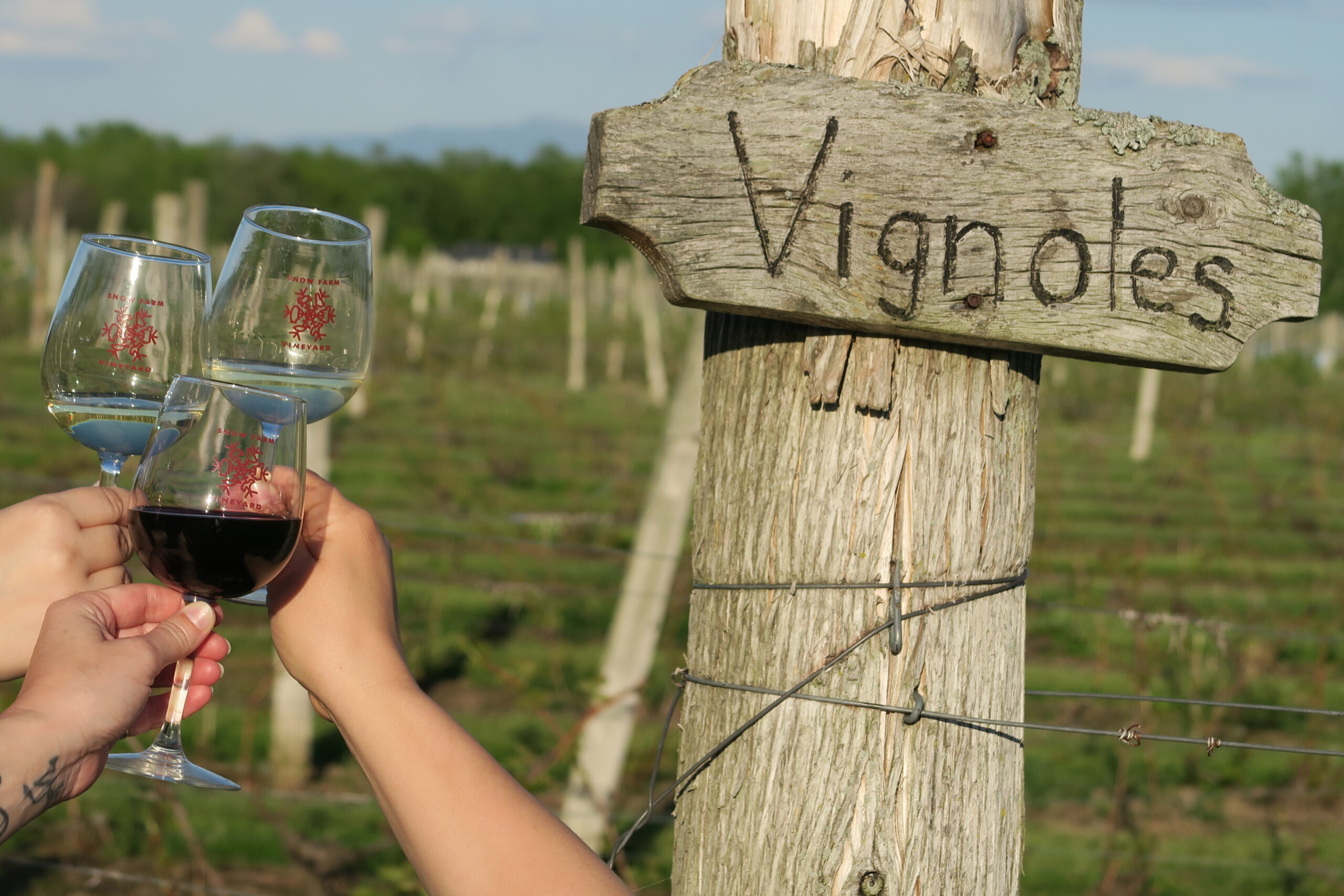
What is Sustainable Wine in Vermont?
Sustainability is commonly talked about in three buckets: environmental, economic, and social. In this article, we’ll focus on the environmental pillar of wine sustainability.
Bradshaw says that just by existing, regardless of the type of growing practices used, vineyards in Vermont can be sustainable because they contribute to healthier soil and increased organic matter compared to other land uses.
Organic matter in the soil is a measure of how productive the soil is including fertility and how much water it can hold. Higher organic matter means the soil holds more water during extreme rain events that are becoming more common in the Northeast and can also sequester more carbon.
“We might have 1.5 percent organic matter on vegetable fields [at our farm], we might have up to 4 percent organic matter in apple orchards, especially where we apply wood chips. In the vineyard, it’s up to 2.5 percent. It’s very similar to a semi-wooded, natural system,” Bradshaw said. “By just having a vineyard, you’re going to be sequestering more carbon compared to an annual crop.”
This is primarily because perennial crops aren’t tilled.
“A vineyard is not producing excess carbon as you would have with a parking lot or annual agriculture…one of the biggest harms you can cause on your farm is wrecking your soil through continual tillage. By not cultivating, we’re already more sustainable in a vineyard,” Bradshaw said.
In addition, vineyards in the Northeast have ample water so don’t need to irrigate or put strains on water systems.
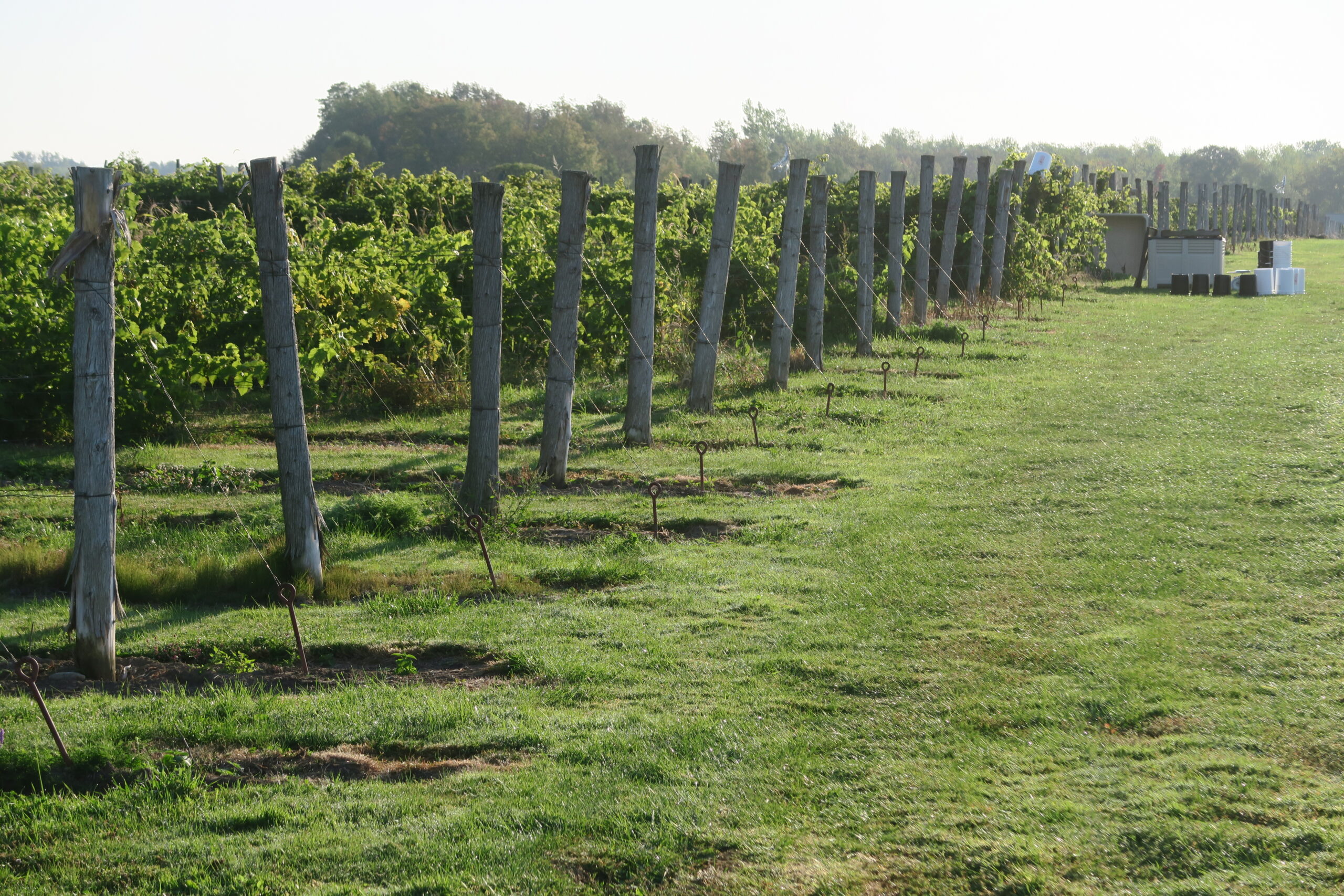
What About Pesticides?
Beyond climate change, another environmental sustainability concern for consumers today is the use of pesticides.
Bradshaw says when the winemaking scene first started in Vermont, UVM Extension surveyed grape growers in Vermont and found most were not farmers and had no experience in agriculture. He and his colleagues seized the opportunity to ensure Vermont winemaking was environmentally responsible from the start when it comes to pesticides.
“We came to this with the premise that they didn’t know anything about pest management or disease management, and we wanted to get them started on the right foot. We, over many years, have worked out a relatively low-impact pest management program, “Bradshaw said.
An integrated pest management (IPM) program is a set of best practices for growers that minimizes the risks to people and the environment.
Bradshaw says because grapes don’t typically have a lot of insect problems in Vermont, most growers apply only one or two applications of carefully targeted low-impact insecticides recommended by UVM Extension, much less than an apple grower for example.
Diseases are a more common concern but can be managed with four or five fungicide applications. Hybrid grapes like those grown in Vermont are more resistant to diseases than traditional Old World wine grapes.
Cold-hardy hybrid grape production is considered to be a more sustainable system than vineyards planted to Vitis vinifera, e.g. Chardonnay, Riesling, Merlot, etc., that are more susceptible to disease and thus rely much more heavily on pesticides.
“I can easily tell you how to grow a crop of grapes in Vermont if your ideology allows for use of four synthetic fungicides, two can even be organic,” Bradshaw said. “Now, there is a tremendous interest in another ideology and mindset around grape production and I’m putting more research interest into this.”
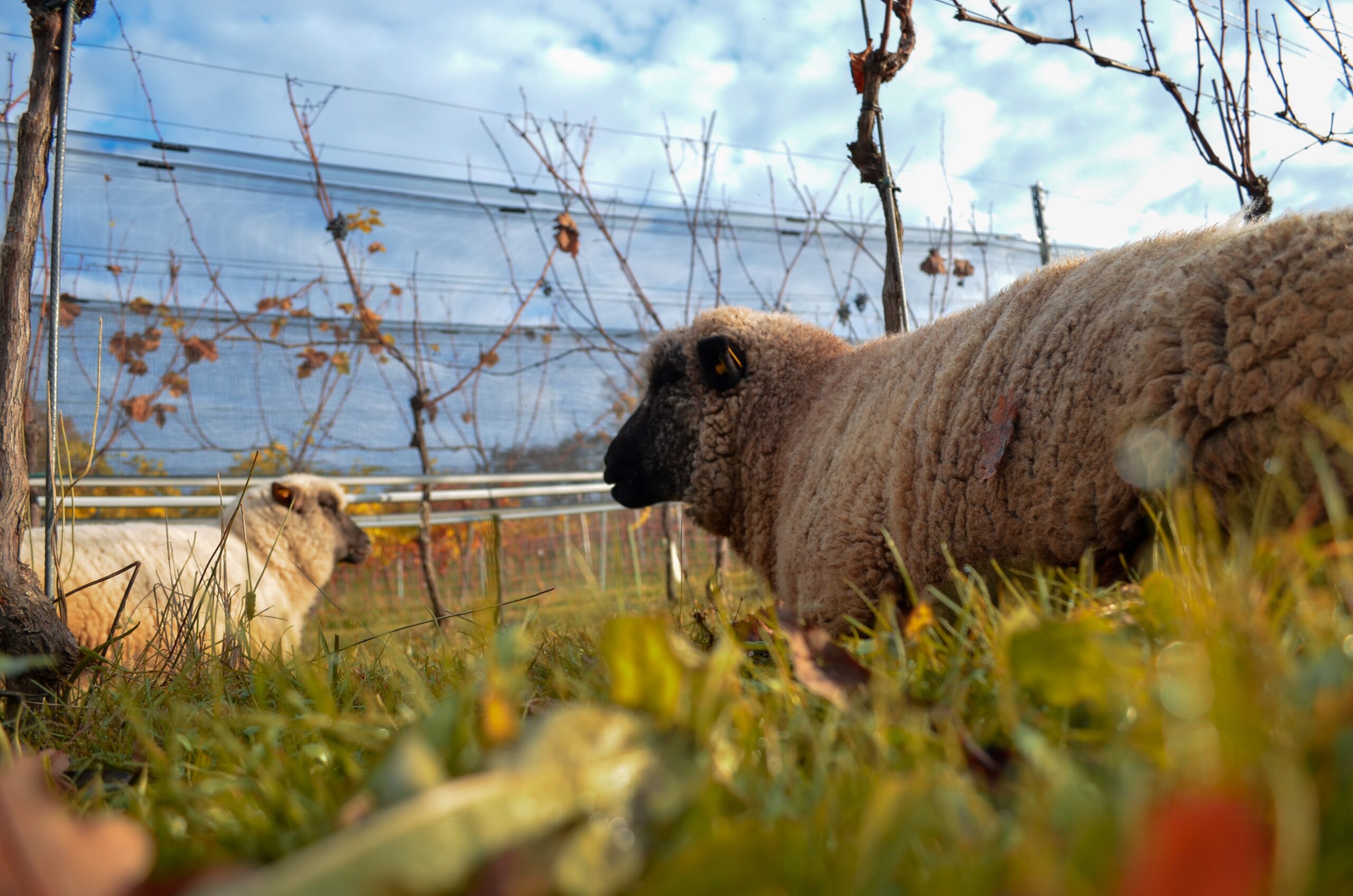
Organic, Biodynamic, Regenerative, and Natural Wine
All of these popular winemaking terms are somewhat related. Here’s a look at how they differ.
Organic Winemaking
Organic is the only set of winemaking practices certified by the USDA with a legal definition.
Organic growers can use pesticides, but they need to be certified for use in organic systems.
Overall though, Bradshaw says consumers don’t need to worry about chemicals in their wine because when grapes go through the process of winemaking it’s rare for modern pesticides to transfer through into the wine. This is because they’re used at low levels and are biologically targeted for a specific purpose.
The exception is sulfur, one of the most commonly used fungicides in organic and conventional winemaking, especially in California. It can be transferred into wine if used heavily and can also affect fermentation. It’s not commonly used in the Northeast at levels that might affect fermentation.
Organic practices include, but are not limited to:
- Organic pesticides only
- No sulfites can be added
- Native yeasts can be used but are not mandatory
- Genetically modified organisms (GMOs) may not be used
Biodynamic Winemaking
Biodynamic goes a step beyond organic. There is no USDA or legal standard for biodynamic winemaking in the U.S., though there is a private certification available through Demeter USA, the country’s first certifying body for chemical-free agriculture.
Bradshaw says the use of biodynamic practices in the vineyard is increasing rapidly in Vermont, but they are not well-defined in a larger wine context.
The next wave of research Bradshaw is conducting will be to better understand the growing practices related to terms like biodynamic. A new survey of winemakers will be conducted by UVM this winter to inform their research.
“To get a sense of what people think each of these [practices] is and what their experiences are with them,” Bradshaw said. “Say you’re using horse nettle tea to manage for powdery mildew…I’ll trial that later, but I want to see if you think that it works.”
Common biodynamic practices include:
- No synthetic pesticides; natural pest control encouraged (ex. ladybugs, sheep)
- Farming around a specific astronomic calendar
- Spiritual practices believed to improve vineyard health
- Diseased leaves are managed by hand-removal and/or sheep
- Compost based fertilizers and teas applied to the soil
“I say this with all academic honesty and not as a pejorative, the difference between organic and biodynamic is a certain amount of mysticism,” Bradshaw said. “There is a reason these practices exist and we want to put a few of these things to trial because it’s a fairly weakly studied body of science.”
What About Regenerative?
Bradshaw says the word regenerative is what sustainable was in the 90s. There is no legal definition.
“Regenerative is the trendy term in agriculture that is being applied to everything from no-till GMO field crops in the Midwest to pseudo biodynamic grapes in Vermont,” Bradshaw said. “If we were to come up with a definition…then there should be a metric of what you’re regenerating.”
In general, regenerative practices prioritize soil health. Bradshaw is quick to point out most perennial crops improve soil health and are already regenerative.
A conventional, organic, or biodynamic vineyard can all be regenerative. The focus is on topsoil and cover crops.
Common regenerative practices include:
- No-tillage of the soil
- No synthetic fertilizers
- Use of cover crops
 Natural Winemaking
Natural Winemaking
There is no legal definition of natural wine.
Generally, natural winemakers believe in minimal chemical and human intervention in the vineyard and the winery.
“The big dividing line in the wine world is whether you’re using cultured yeast or not,” Bradshaw said.
Natural wine is fermented with no added yeast or other additives.
Common natural winemaking practices include:
- Conventional, biodynamic, and organic growing practices
- No disruption to the fermentation process
- No additives or native yeast, some use sulfites
What about practices in the vineyard?
“It would be hard to argue that you can make a natural wine from grapes with a heavy pesticide application,” Bradshaw said, “but there is no one saying you can’t because there is no definition.”
Sustainable Wine is More Than a Set of Growing Practices
Through his research, Bradshaw and his colleagues evaluate 16 varieties of grapes in Vermont over various 10-year periods under different growing conditions, looking at their disease susceptibility, growth, yield, and juice quality.
As the next wave of research at UVM focuses on biodynamic and other ‘natural’ grape-growing practices, more information will be available to help vineyards find a wider array of growing practices to meet both their needs and consumer needs.
In the end, the success of a vineyard comes down to more than a set of growing practices.
“Wine is an interesting product. It’s not something we need, though some would argue we do,” Bradshaw said. “There is so much culture, provenance, and story tied to it that’s not the same as a carrot, or wheat….it becomes much more true in wine. The story that comes with wine goes back centuries and it makes for a more marketable product when you can really tell that story.”
This interview and research was provided by Snow Farm Vineyard in South Hero, Vermont. Learn more about the Snow Farm Vineyard story here.
